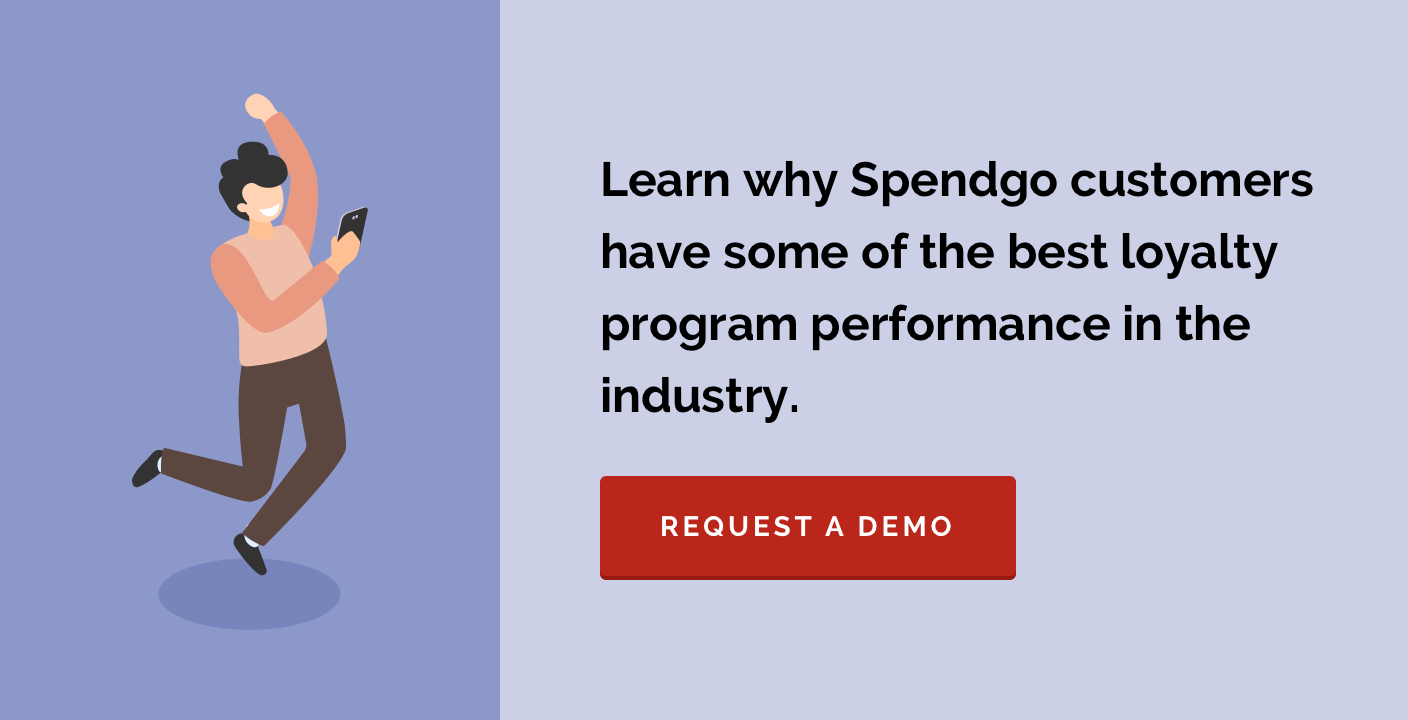How can you tell if your loyalty program is working? Or if a loyalty program platform is worth implementing with your customers?
When it comes to loyalty program KPIs, there’s no shortage of acronyms and fancy-looking charts to choose from.
But there are three key performance indicators that will affect your bottom line more than all the rest.
When it comes to your loyalty platform, the three most important KPIs are…
- Signups
- Adoption rate
- Incentive redemption rate
These KPIs are all indicators of customer experience — and all have a direct impact on your top line.
In this post, we’ll define each of these KPIs and provide some quick tips for improving the numbers at your business.
KPI #1: Signups
What is it?
The number of new customers joining your loyalty program in a given period.
How do I measure it?
How you benchmark signups will depend on the nature of your business.
If you have more than one physical location, the best way to track signups is to compare numbers store to store (accounting for differences in total customer volume).
If you have only one location, or are online-only, the best way to track signups will be to compare the numbers month to month or quarter to quarter. Keep in mind, signups will likely decrease gradually over time as more of your frequent customers enroll — that’s okay!
What’s considered average?
The average store signs up 1,000-2,000 new loyalty program members in the first year.
However, this number largely depends on the tools you use. If you leverage an optimized solution like Spendgo, you can get up to 12x more signups.
How do signups affect your sales?
Simply put, the higher your signup rate, the higher the total volume of customers enrolled in your loyalty program will be.
Each enrolled customer represents a cost savings compared to the cost of new customer acquisition.
In addition, a larger loyalty network means a wider audience for promotions and campaigns.
How can I boost signups?
Email campaigns, social media ads, and google ads can get you more signups, but they’re also expensive, and don’t always produce good ROI.
The simplest way to sign up more customers for your loyalty program is to improve the customer experience. That means making it as easy as possible for the customer to sign up while they’re making a purchase.
In a physical environment, let them do it themselves on a customer-facing tablet at checkout. Online, make it extremely clear what steps to take to sign up. Don’t make the customer jump through hoops — like downloading an app or providing a ton of personal information — to enroll in your loyalty program.
Read more tips for improving loyalty program signups.
KPI #2: Adoption rate
What is it?
Adoption rate is a KPI that measures how much your customers are using your loyalty program.
Adoption is distinct from participation. While participation simply measures the amount of customers enrolled in a loyalty program compared to those that aren’t, adoption accounts for loyalty program members who are enrolled and actively using the program.
How do I measure it?
Adoption rate can be calculated by dividing the number of transactions processed through the loyalty program by the total number of transactions processed.
Alternatively, adoption rate can be calculated by dividing the dollar amount of transactions processed through the loyalty program by the dollar amount of total transactions processed. If your average loyalty transaction is much higher (or lower) than your average non-loyalty transaction, the numbers could look quite different.
Unlike signups, adoption rate should gradually increase over time as customers get into the habit of using the program and you optimize rewards.
What’s considered average?
The industry-average adoption rate is around 10%. With Spendgo, businesses regularly reach adoption rates of up to 65%.
How does adoption rate affect your sales?
Even if you have a lot of signups, you still need people to actively use your program in order to achieve an associated revenue boost.
Generally speaking, customers who are engaged in a loyalty program are more valuable than those who are not — those who actively participate in the program are more likely to spend more, make frequent purchases, and advocate for your brand.
How can I improve my adoption rate?
If your signups are healthy but your adoption rate is low, it could mean that you need to optimize your incentives.
Offering worthwhile incentives is the key to long-term loyalty program success. Common complaints include:
- Rewards take too long to earn
- Rewards aren’t valuable enough
- Rewards are restrictive (blackout dates, can’t be combined with sales, etc.)
In addition, low adoption rate could be a signal that your loyalty platform is difficult to use. Customers may forget or decide it's not worth it to pull up their loyalty account every time they make a purchase.
The best way to combat this is to make it super easy to access a loyalty account, using a customer-facing tablet at checkout in a physical store, or automatically pulling up account information online.
Read more tips for improving loyalty program adoption rate.
KPI #3: Incentive redemption rate
What is it?
Incentive redemption rate tracks the number of incentives you offer that are actually being redeemed. It’s a way of assessing the level of customer engagement with the loyalty program.
How do I measure it?
Simply divide the number of incentives redeemed by the number of incentives offered.
What’s considered average?
The industry-average loyalty program redemption rate is around 60%. Spendgo customers, meanwhile, have an average redemption rate of 92%.
How does redemption rate affect your sales?
A high redemption rate indicates that loyalty program members are engaged customers who are actually coming back to your business again and again to use the incentives.
In other words, a high redemption rate is a good predictor of long-term revenue gains.
How can I improve my incentive redemption rate?
Low redemption rate usually indicates an issue with your incentives (i.e. they’re not valuable enough) or the way they’re being delivered (i.e. they’re too difficult to redeem).
Aside from increasing the value of your rewards, you can improve incentive redemption rate by improving the customer experience during the redemption process.
One easy tip is to avoid making the customer remember that they have rewards. Rather than making them find a coupon code or QR code, have the rewards appear automatically when they sign into their account.
Read more tips for improving incentive redemption rate.
What’s next?
Once you’ve identified the loyalty program KPIs that are really important, you can focus on improving your numbers.
If your numbers are only average (or below average), the most impactful change you can make might be switching your loyalty program platform to one that offers a better customer experience.
Don’t be shy when you’re shopping around for a new provider. Ask for their average customer signup, adoption, and incentive redemption rates, and compare those to the industry averages listed above and the numbers you get from other providers.
Learn why Spendgo customers have some of the best loyalty program performance in the industry. Schedule a demo.




